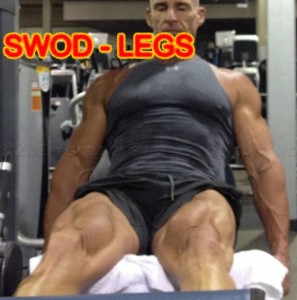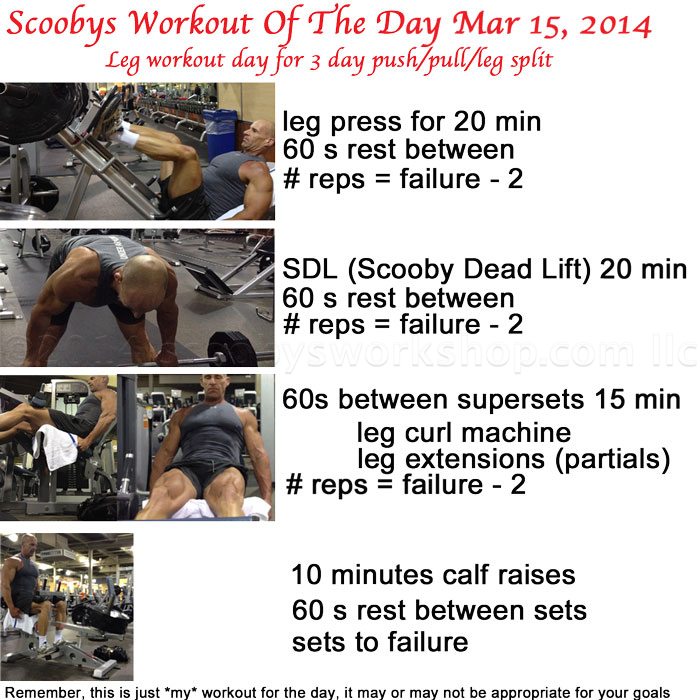SWOD Leg workout for 3 day split
(SWOD = Scooby’s Workout Of The Day)
Since I do so many endurance sports like running and cycling, when I do leg resistance training, which is not 12 months a year, I normally go heavy with lots of rest between sets and go to failure on every set. (see does Scooby do legs). This workout was someone completely new for me and I have not done a workout like this in decades. It was high volume with minimal rest and no going to failure. The whole subject of going to failure deserves its own page and video, its on my list. Anyway, you will note that for the number of reps I use the notation “failure – 2”, what that means is that I try to stop about 2 reps before I couldnt possibly do another rep. What that does is allow me to take a much shorter rest and therefore get in many more reps in a given span of time.
Remember that the purpose of the SWOD is not so much to give you workouts to do but to give you and idea of my thought process. Why I alter my workouts in specific ways, how I work around injuries, etc. For your first two years of lifting you are well advised to use a well established workout program like those on my “choose the best workout for you” page without alteration, but after that, you need to design your own workouts for optimal progress. This SWOD series is an attempt to help you do that, to see how to design a workout program that is optimal for YOU. (text continued below)
You will note that this workout was done in a gym. Leg workouts are the one thing I do in the gym, I do all my other workouts at home. As I have said in the past, gyms are not magical places that make muscles grow. You can get just as big working out at home as you can in a gym, all you need is a few bars and enough weight plates. What the machines in gyms are awesome for is working around injuries. For those of you who remember when I put the microphone to my knee and bent down, you are probably still cringing at the noise you heard. Anyway, I have a congenital problem with my kneecap and the success rate of surgery is about 2% – in other words, I need to make the best of it. The other issue I have is a genetic pre-disposition for lower back pain. My father had it, I have it. I work constantly to keep my core strong as steel and my hamstrings flexible but the one thing that does me in every time is spinal compression. Despite those who say that squats are “good for everyone”, they are not good for me. Anyway, the machines in gyms allow me to make my legs work against incredible resistance without any spinal compression.


